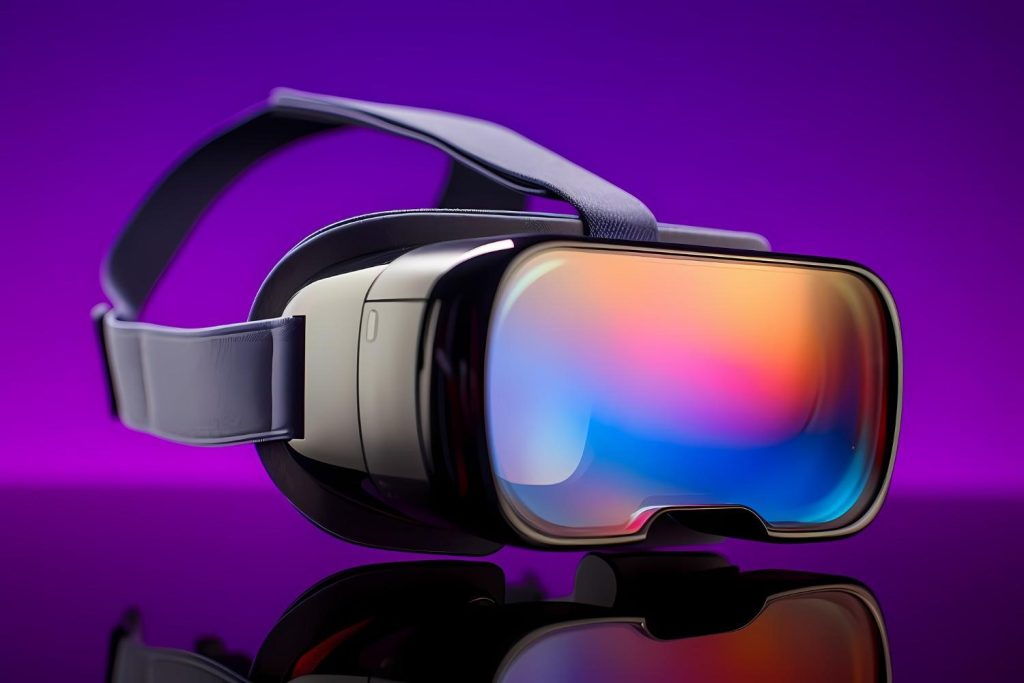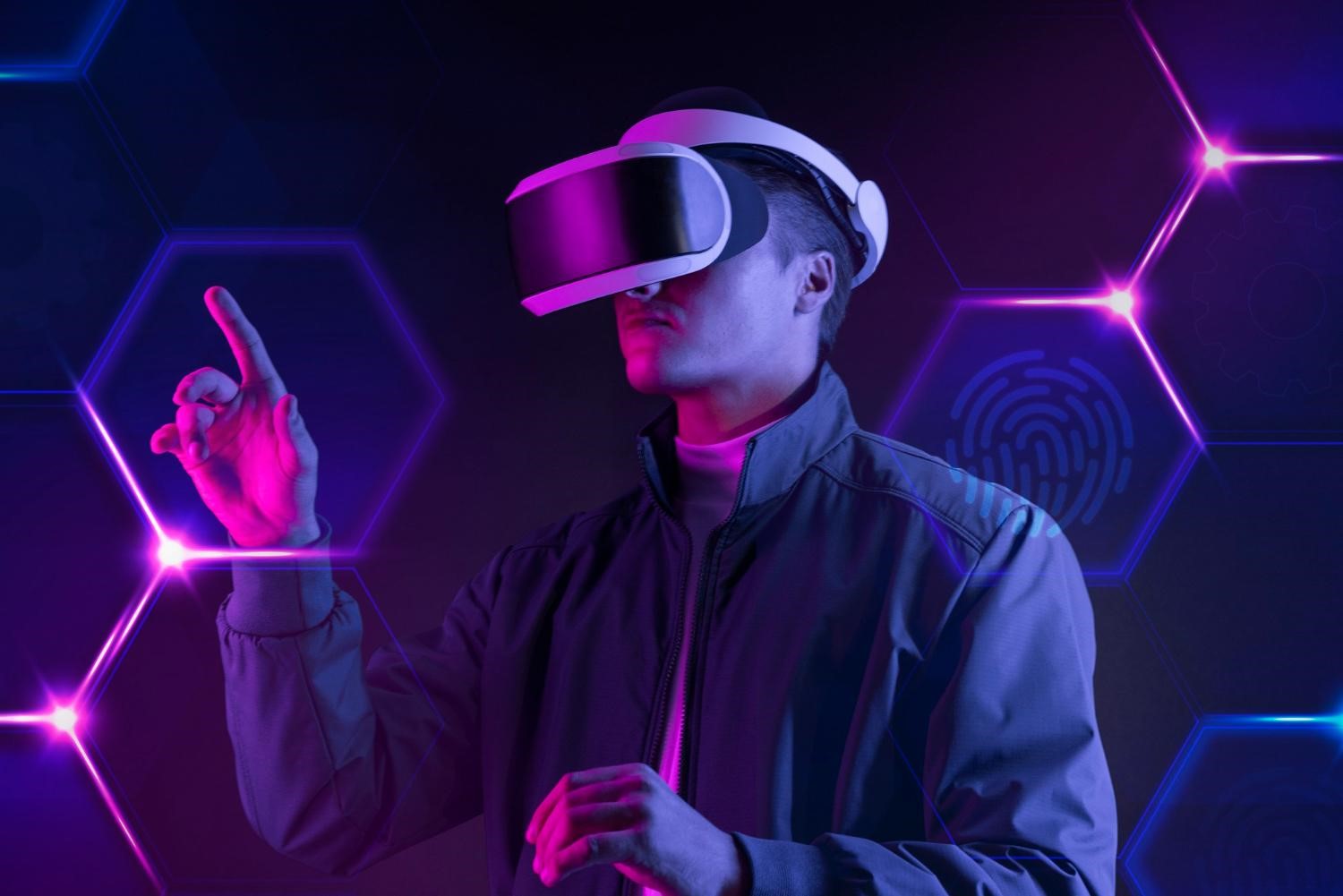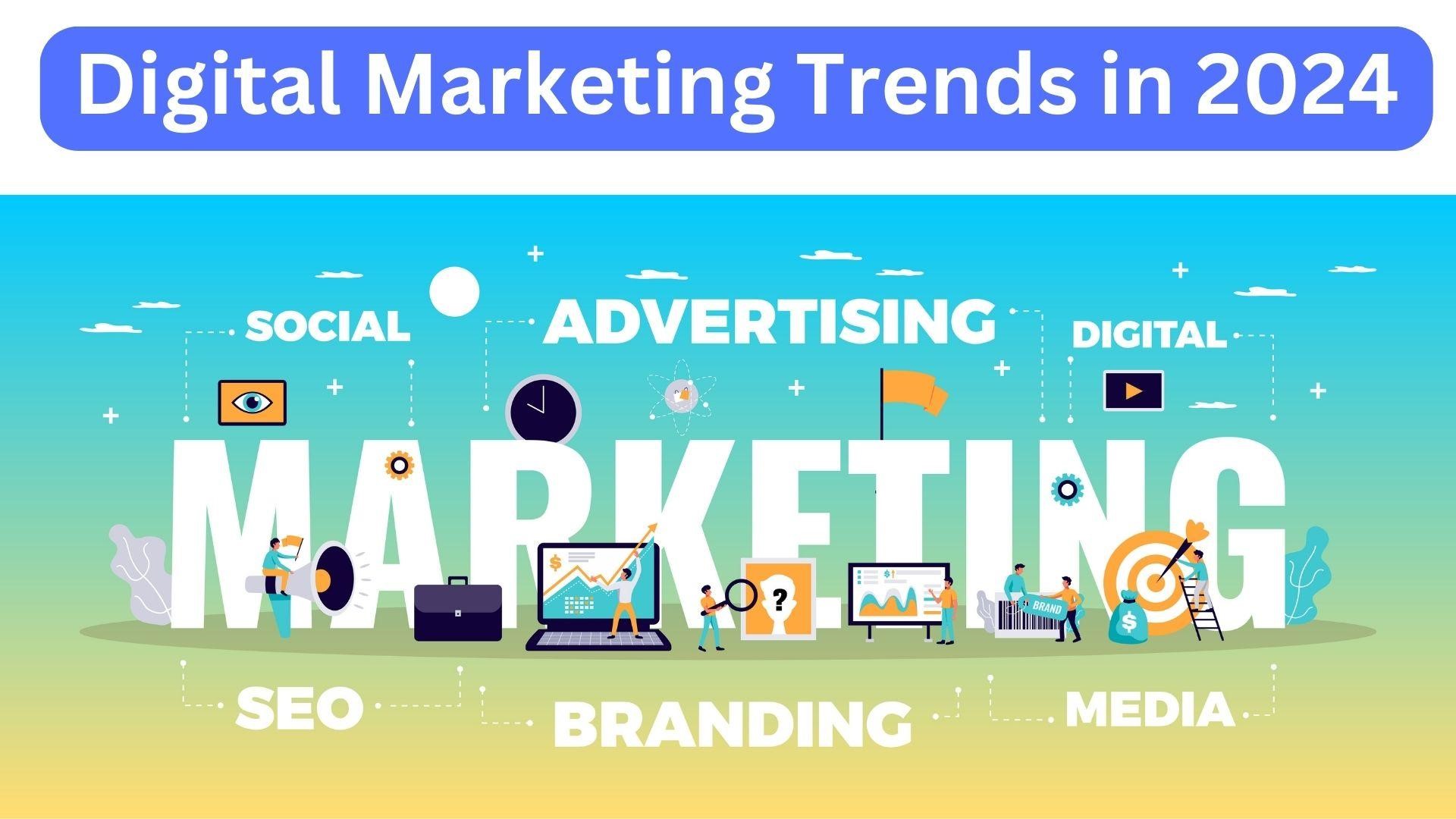The Evolution of Reality: AR and VR in the Tech Landscape
Introduction:
In the dynamic realm of technology, Augmented Reality (AR) and Virtual Reality (VR) stand as monumental pillars reshaping our perception of reality. As we traverse through the 21st century, these immersive technologies have transcended their nascent stages, intertwining seamlessly with our daily lives. This extensive blog explores into the multifaceted journey of AR and VR, tracing their roots, examining their current impact across diverse industries, and contemplating the future possibilities they hold.
1. The Genesis of Augmented and Virtual Reality:
The inception of AR and VR dates back to the latter half of the 20th century, with pioneering contributions from visionary minds. VR, often considered the older sibling, witnessed its nascent forms in creations like the Sensorama in the 1960s, providing a precursor to immersive experiences. The first head-mounted display (HMD) by Ivan Sutherland, known as the “Sword of Damocles,” marked a significant milestone in the development of VR.
Parallelly, AR began its journey with Sutherland’s work in the 1960s. Early manifestations, albeit rudimentary, hinted at the potential of merging digital information with the physical world. The groundwork laid during these years would eventually evolve into the transformative technologies we know today.
2. The Rise of Augmented Reality:
The advent of smartphones in the 21st century became a catalyst for the proliferation of AR. Apps like Pokémon GO captivated global audiences, introducing them to the concept of augmented experiences by overlaying digital elements onto the real world through the device’s camera. This marked the dawn of practical AR applications in gaming, advertising, and navigation, transcending the confines of niche technological circles and stepping into mainstream consciousness.
The gaming industry, in particular, embraced AR with fervor, leveraging its potential for creating interactive and engaging experiences. The success of Pokémon GO underscored the appetite for AR-enhanced entertainment and set the stage for further innovations in the field.
3. Virtual Reality Takes Center Stage:
While AR found its footing in the world of smartphones, VR embarked on a journey toward more immersive experiences. Companies like Oculus, HTC, and Sony pioneered the development of VR headsets, making the technology more accessible to the masses. VR’s initial stronghold in the gaming industry expanded to encompass diverse sectors, including education, healthcare, and professional training.
The gaming landscape witnessed a paradigm shift with VR, offering players an unparalleled sense of presence and interaction. The development of high-quality VR content and peripherals further solidified its position as a transformative force in the entertainment sector.
4. AR and VR in Education:
Education emerged as a fertile ground for the integration of AR and VR, revolutionizing traditional learning methods. Augmented Reality applications brought textbooks to life, overlaying interactive elements onto pages and transforming static content into dynamic, engaging experiences. On the other hand, Virtual Reality created immersive virtual classrooms, enabling students to transcend geographical boundaries and explore historical events, scientific phenomena, or even outer space with unprecedented realism.
The impact of AR and VR in education extends beyond traditional classroom settings. These technologies cater to diverse learning styles, offering personalized and adaptive learning experiences. Practical applications include virtual field trips, hands-on laboratory simulations, and collaborative projects in virtual environments.
5. AR and VR in Healthcare:
In the realm of healthcare, AR and VR have emerged as transformative tools, revolutionizing medical training, surgical procedures, and patient care. AR overlays digital information onto the surgeon’s field of view, providing real-time guidance during complex procedures. This enhances precision, reduces errors, and shortens recovery times.
Virtual Reality finds application in medical training simulations, allowing healthcare professionals to practice intricate surgeries in a risk-free virtual environment. VR also proves beneficial in pain management, offering therapeutic experiences to patients undergoing treatments or rehabilitation. The immersive nature of VR can distract patients from pain and anxiety, contributing to improved outcomes.
6. Challenges and Future Prospects:
Despite their immense potential, AR and VR technologies face several challenges. Hardware limitations, including the bulkiness of VR headsets and the processing power required for AR applications, present barriers to widespread adoption. Ethical concerns, such as privacy issues related to augmented data in public spaces, also need careful consideration.
The future of AR and VR lies in addressing these challenges through continuous research and development. Advancements in hardware, including the development of more compact and affordable devices, are crucial for expanding the reach of these technologies. Additionally, addressing ethical concerns through robust regulations and privacy frameworks is essential for fostering public trust and acceptance.
7. The Convergence of AR and VR:
The trajectory of AR and VR points towards a convergence, where the lines between the two technologies blur, giving rise to Mixed Reality (MR). MR combines elements of both AR and VR, offering users a seamless integration of digital and physical worlds. This convergence opens new frontiers for interactive and collaborative experiences, influencing industries such as architecture, design, and remote collaboration.
Mixed Reality extends beyond mere overlaying of digital information onto the physical world; it enables users to interact with and manipulate digital objects in real-time, fostering a deeper sense of immersion. The potential applications of MR are vast, ranging from interactive design and prototyping to remote assistance and training scenarios.
The below explanation takes you on a journey through the multifaceted realms of AR and VR, uncovering their applications, trends, and the collectively promising future they bring forth.
Augmented Reality in Advertising:
Augmented Reality (AR) has redefined the landscape of advertising, offering interactive and engaging experiences. Brands now leverage AR to create immersive campaigns that allow users to visualize products in their own space before making a purchase. From virtual try-ons to interactive advertisements, AR is reshaping how consumers interact with brands.
Virtual Reality Storytelling:
Virtual Reality (VR) is not just a medium; it’s an immersive storytelling tool. Virtual Reality storytelling transports users to alternate worlds, providing a first-person narrative experience. This medium is increasingly used in filmmaking, gaming, and educational content, allowing users to be active participants in the story rather than passive observers.
Digital Reality:
The term “Digital Reality” encompasses both AR and VR, creating a spectrum of experiences that bridge the gap between the physical and digital worlds. This fusion of technologies is at the forefront of reshaping how we perceive and interact with our environment, from enhancing real-world experiences with AR to creating entirely immersive virtual worlds with VR.
Future of AR:
The future of Augmented Reality holds exciting possibilities. With ongoing advancements in AR devices and applications, we can anticipate a seamless integration of digital information into our daily lives. From smart glasses to AR-enhanced navigation, the future of AR is poised to enhance our understanding and interaction with the world around us.
VR Trends:
Virtual Reality continues to evolve, and staying updated with VR trends is crucial. From the development of more accessible VR devices to the exploration of VR in healthcare and education, staying ahead of trends ensures a comprehensive understanding of how VR is shaping various industries and experiences.
Evolution of Virtual Reality:
The evolution of Virtual Reality has been marked by technological breakthroughs, from early prototypes to sophisticated VR headsets. Explore the key milestones in VR’s journey, including advancements in graphics, hardware, and the expansion of VR beyond gaming into fields like medicine, architecture, and education.
AR Applications:
The applications of Augmented Reality are diverse and continually expanding. From enhancing user experiences in retail and gaming to revolutionizing education with interactive textbooks, AR is a versatile technology with applications across industries. This section will explore the multifaceted uses of AR in our daily lives.
VR Devices:

The landscape of Virtual Reality devices has evolved rapidly, with a range of VR headsets catering to different needs and preferences. From standalone devices to tethered systems, VR devices offer varying degrees of immersion. This section will delve into the types of VR devices available and their respective advantages.
AR Development:
The development of AR applications involves a combination of software and hardware innovations. From coding AR experiences to creating user-friendly interfaces, AR development plays a crucial role in bringing augmented experiences to life. Explore the tools, languages, and frameworks utilized in AR development.
VR Advancements:
The advancements in Virtual Reality technology are relentless. From improved resolution and refresh rates to the integration of haptic feedback, VR is becoming more realistic and engaging. This section will highlight the recent advancements propelling VR into new realms of immersion.
Digital Transformation:
AR and VR are key components in the broader digital transformation landscape. Explore how these technologies contribute to reshaping industries, business processes, and customer interactions. From virtual collaboration to augmented data visualization, AR and VR are integral to the digital transformation journey.
Tech Advancements:
Beyond AR and VR, technological advancements across various domains influence the trajectory of digital experiences. From artificial intelligence to blockchain, this section will touch upon broader tech trends that synergize with AR and VR, creating a holistic understanding of the evolving technological landscape.
Reality Technologies:
The term “Reality Technologies” encompasses AR, VR, and the emerging field of Mixed Reality (MR). This section will explore the synergy between these technologies, their current applications, and the potential for further convergence to create seamless digital-physical experiences.
Immersive Experiences:
Immersive experiences are at the core of AR and VR technologies. This section will delve into how these technologies create experiences that transcend traditional forms of interaction. From virtual travel to interactive simulations, immersive experiences redefine how we engage with content and information.
Future Tech Trends:
Looking beyond AR and VR, this section will explore broader technological trends shaping the future. From the Internet of Things (IoT) to 5G connectivity, understanding these trends provides insight into the evolving tech landscape and its impact on AR and VR.
Virtual Environments:
Virtual Environments are the canvases of VR experiences. This section will explore how virtual environments are created, from realistic simulations to fantastical worlds. The design principles and technologies behind crafting these environments will be highlighted.
Tech Innovations:
This section will spotlight recent and upcoming innovations, from breakthroughs in materials for VR hardware to advancements in AR applications. Understanding these innovations provides a glimpse into the future of immersive technologies.
Digital Realities:
“Digital Realities” encapsulate the various forms of digital experiences, including AR and VR. This section will explore how these digital realities are integrated into everyday life, entertainment, and work, shaping a new paradigm of human-computer interaction.
Augmented Reality Devices:
The hardware for Augmented Reality ranges from smartphones to specialized AR glasses. This section will provide an overview of the various devices used to deliver AR experiences, their features, and how they contribute to the adoption of augmented technology in different contexts.
VR Gaming Industry:
Virtual Reality has made a significant impact on the gaming industry, introducing unprecedented levels of immersion. This section will explore the current state of VR gaming, popular VR titles, and the influence of VR on the gaming landscape.
Advantages of Virtual Reality:
Understanding the advantages of Virtual Reality goes beyond entertainment. This section will delve into how VR benefits industries such as education, healthcare, and training. From realistic simulations to enhanced learning experiences, VR offers a range of advantages.
Virtual Reality Development Tools:
Developing content for Virtual Reality requires specialized tools. This section will explore the software, frameworks, and development kits used in creating VR applications. Understanding these tools is essential for developers entering the VR space.
AR Vs VR
Here’s a side-by-side comparison of Augmented Reality (AR) and Virtual Reality (VR) in tabular form:
Feature |
Augmented Reality (AR) |
Virtual Reality (VR) |
| Definition | Overlays digital content onto the real world. | Immerses users in a completely virtual environment. |
| Interaction with Reality | Enhances real-world experiences. | Creates a completely isolated virtual environment. |
| Hardware | Typically uses devices like smartphones, AR glasses, or heads-up displays. | Requires VR headsets that fully cover the user’s field of view. |
| Example Applications | Navigation apps (e.g., Google Maps AR), Pokémon GO, AR advertising. | VR gaming, simulations (e.g., flight simulators), virtual tours. |
| Immersiveness | Offers partial immersion by adding digital elements to the real world. | Provides full immersion, blocking out the real world entirely. |
| Use Cases | Retail (virtual try-on), education (interactive textbooks), healthcare (surgical guidance). | Gaming, simulation-based training, virtual meetings. |
| Social Interaction | Allows users to stay connected with the real world and people around them. | Often isolating as users are fully immersed in a virtual environment. Social VR experiences exist but may lack real-world interaction. |
| Hardware Requirements | Generally less resource-intensive, can run on standard smartphones or AR glasses. | Requires specialized hardware with high computing power for a seamless experience. |
| Challenges | Limited field of view, dependency on external factors (e.g., lighting conditions), and potential privacy concerns. | Potential for motion sickness, high hardware costs, and limited real-world awareness. |
| Future Trends | Increasing integration into daily life, advancements in smart glasses, and wider adoption in industries like manufacturing and healthcare. | Continued improvements in hardware, increased realism, and exploration of haptic feedback for a more immersive experience. |
Keep in mind that both AR and VR have unique strengths and applications, and the choice between them depends on the specific needs of the user or the industry.
Conclusion:
The tech evolution of Augmented and Virtual Reality stands as a testament to humanity’s relentless pursuit of merging the realms of the digital and the physical. From the rudimentary beginnings in the 1960s to the sophisticated applications seen today, AR and VR have come a long way. Their impact across industries, from gaming and education to healthcare and beyond, underscores their transformative potential.
As we stand at the cusp of the third decade of the 21st century, the convergence of AR and VR into Mixed Reality heralds a new era. This fusion promises to redefine how we perceive and interact with the world around us, creating opportunities for innovation and collaboration that were once confined to the realm of science fiction. The boundaries between reality and the digital realm continue to blur, paving the way for a future where the immersive experiences provided by AR and VR technologies become an integral part of our everyday lives.
 " alt="">
" alt="">








